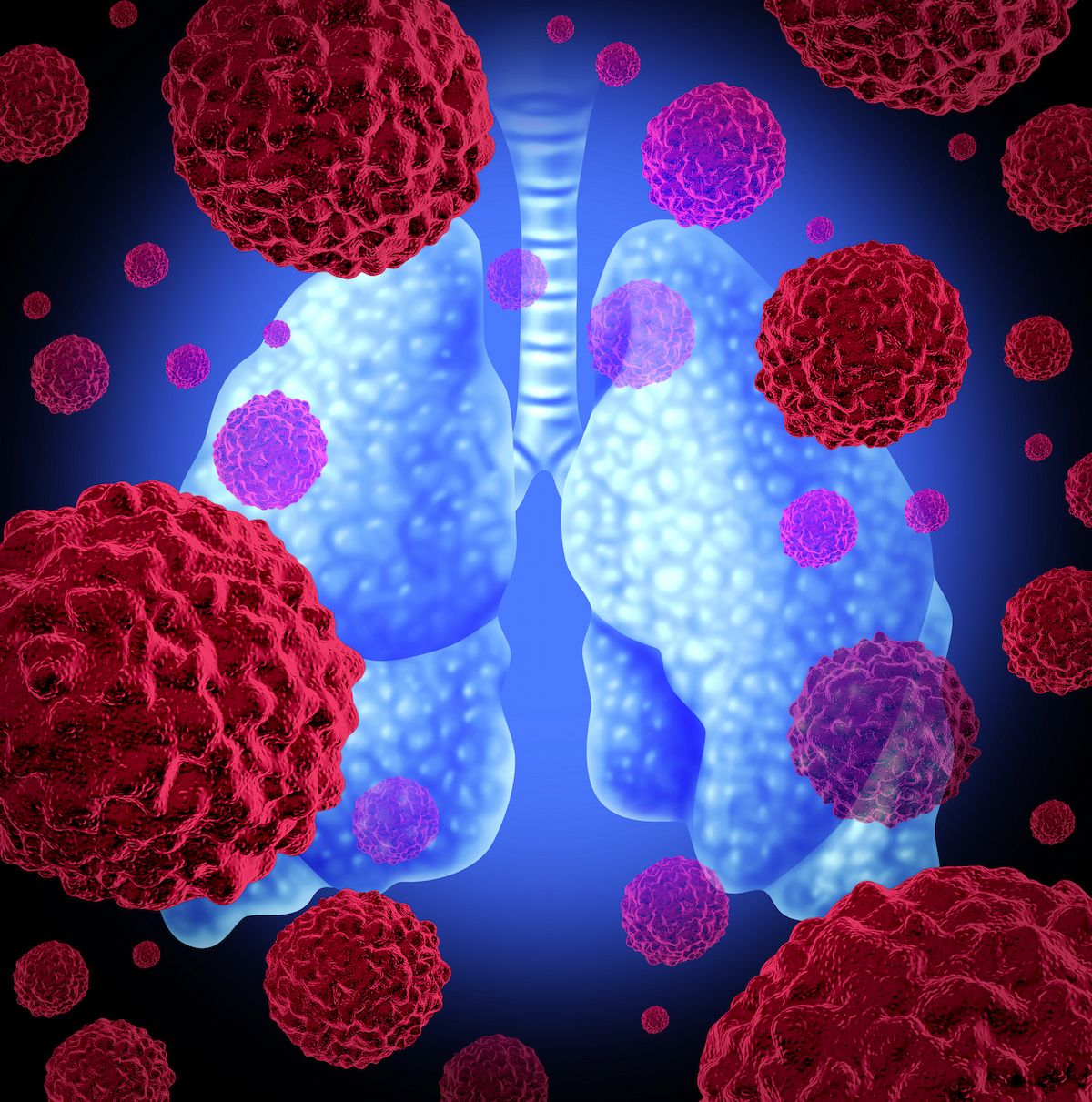Neoadjuvant Nivolumab/Chemo Improves OS Vs Chemotherapy in Resectable NSCLC
Updated, comprehensive OS results with the combination in resectable NSCLC will be shared in a future peer-reviewed setting.
Updated, comprehensive OS results with the combination in resectable NSCLC will be shared in a future peer-reviewed setting.

Neoadjuvant nivolumab (Opdivo) with platinum-doublet chemotherapy demonstrated a statistically significant and clinically meaningful improvement in overall survival (OS) compared with neoadjuvant chemotherapy alone in adult patients with resectable non–small cell lung cancer (NSCLC), according to final analysis data from the phase 3 CheckMate-816 trial (NCT02998528)announced in a press release from the developer, Bristol Myers Squibb.1
The updated data will be evaluated and updated in a comprehensive manner in a future peer-reviewed setting.
Previous results were presented at the 2024 American Society of Clinical Oncology (ASCO) Annual Meeting.2
“The final analysis of [OS] in the CheckMate-816 study underscores the potential of [nivolumab] in combination with chemotherapy to provide a meaningful survival benefit for patients with resectable NSCLC,” Dana Walker, MD, MSCE, vice president and global program lead of late development in Oncology at Bristol Myers Squibb, stated.1 “This is the first and only phase 3 study of a neoadjuvant-only immuno-oncology therapy to show a statistically significant benefit in patients with resectable NSCLC. [Nivolumab]-based therapies have shown improved efficacy in the neoadjuvant and perioperative treatment of patients with resectable NSCLC.”
According to the 4-year update at the 2024 ASCO Annual Meeting, at a data cutoff of February 23, 2024 with a median follow-up of 57.6 months, the median event-free survival (EFS) was 43.8 months in the nivolumab and chemotherapy group and 18.4 months in the chemotherapy alone group (HR, 0.66; 95% CI, 0.49-0.90).
In both groups, median OS was not reached (NR; HR, 0.71; 98.36% CI, 0.47-1.07; P = .0451), although patients who received nivolumab and chemotherapy who had a pathologic complete response (pCR) experienced a 95% 4-year OS rate vs 63% for those who did not have a pCR (HR, 0.08; 95% CI, 0.02-0.34). Median lung cancer-specific survival was NR in both groups (unstratified HR, 0.62; 95% CI, 0.41-0.93); the 4-year lung cancer-specific survival rates were 79% in the combination arm and 66% in the chemotherapy alone group.
When classified by type of neoadjuvant platinum chemotherapy received, the median OS of those who received cisplatin (n = 124 in the combination arm and n = 134 in the chemotherapy arm) was NR in both groups (HR, 0.79; 95% CI, 0.53-1.17), and for those who received carboplatin, it was NR in the combination arm (n = 39) and 37.2 months in the chemotherapy arm (n = 33; HR, 0.36; 95% CI, 0.16-0.81).
By extent of resection, median OS was NR in both groups who had lobectomy (HR, 0.71; 95% CI, 0.41-1.21). In the group who had pneumonectomy, it was NR in the combination arm and 61.8 months in the chemotherapy group. In patients who received lobectomy, 4-year EFS rates were 56% in the combination arm and 43% in the chemotherapy arm (HR, 0.59; 95% CI, 0.39-0.90); in those with pneumonectomy, they were 57% and 40%, respectively.
There were 179 patients in the combination arm and 179 patients in the chemotherapy arm, and 29% and 50%, respectively, received any kind of subsequent therapy; 13% and 24% received radiotherapy, and 3% and 5% underwent surgery. Additionally, 25% and 42% received any type of systemic therapy; 22% and 26% received chemotherapy, 10% and 27% received immunotherapy, 7% and 9% received VEGFR inhibitors, and 3% and 6% received EGFR or ALK tyrosine kinase inhibitors.
Eligible patients had early stage IB-IIIA NSCLC with lung function capacity capable of tolerating the proposed lung surgery, an ECOG performance status of 0 or 1, and available tissue of primary lung tumor.3 Those with presence of locally advanced, inoperable, or metastatic disease; known or suspected autoimmune disease; and prior treatment targeting T cell co-stimulation pathways were excluded from participation.
Primary trial end points were EFS and pCR. Secondary end points were major pathologic response rate, OS, and time to death or distant metastases.
Of all concurrently randomly assigned patients, 86 (24%) had detectable circulating tumor DNA (ctDNA) levels at baseline. The ctDNA clearance rate was 56% in the combination arm and 35% in the chemotherapy arm. Patients with ctDNA clearance had improved OS vs those without ctDNA clearance in the combination arm (HR, 0.31; 95% CI, 0.10-0.90) and in the chemotherapy arm (HR, 0.58; 95% CI, 0.20-1.64).
Regarding safety, 84% of patients in the combination arm and 90% of patients in the chemotherapy arm experienced a treatment-related adverse event (TRAE) of any grade; of grade 3 and 4 TRAEs, 36% and 38%, respectively, experienced one. Grade 5 surgery-related AEs happened in 2 patients due to pulmonary embolism and aortic rupture in the combination arm, and both were unrelated to the study drug. TRAEs of any grade led to discontinuation in 11% and 10% of patients, and treatment-related deaths occurred in 0 patients in the combination arm and 3 patients in the chemotherapy arm.
Reference
- Bristol Myers Squibb announces Opdivo® plus chemotherapy as the first and only neoadjuvant-only immuno-oncology therapy to demonstrate statistically significant and clinically meaningful overall Survival in resectable non-small cell lung cancer. News release. Bristol Myers Squibb. February 19, 2025. Accessed February 19, 2025. https://tinyurl.com/yt9c4f5r
- Spicer J, Girard N, Provencio M, et al. Neoadjuvant nivolumab (NIVO) + chemotherapy (chemo) vs chemo in patients (pts) with resectable NSCLC: 4-year update from CheckMate 816. J Clin Oncol. 2024;42(suppl 17):LBA8010. doi:10.1200/JCO.2024.42.17_suppl.LBA8010
- A neoadjuvant study of nivolumab plus ipilimumab or nivolumab plus chemotherapy versus chemotherapy alone in early stage non-small cell lung cancer (NSCLC) (CheckMate 816). ClinicalTrials.gov. Updated January 24, 2025. Accessed February 19, 2025. https://tinyurl.com/2tx89ukx